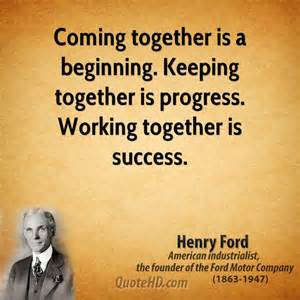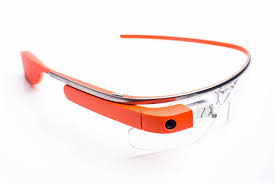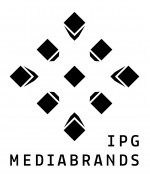The third and second last Dice conference “Get Started” was held on the 17th of February in The Helix. The theme of the conference was entrepreneurship. Entrepreneurship is all around us, in our local communities, on T.v. and even in our own universtiy, Dcu. Without entrepreneurs, I wouldn’t be writing this blog on WordPress and you wouldn’t be reading it on your phone, laptop or Ipad. Our world is constantly changing and developing due to new products and services being invented. Entrepreneurs face many difficulties when starting up a new business, such as getting finance and making the business a success.
Niamh Bushnell, Dublin Commissioner for Startups, opened the conference. Niamh gave us a brief summary of her background. Niamh was the Entrepreneur in Residence at Talent Tech Labs in New York City. She also worked for Enterprise Ireland in New York. She is also an angel investor and mentor at Entrepreneurs Roundtable Accelerator in New York. Niamh co-founded her first company, Pan Research, with her brother in Dublin in 1996. “Pan research provides expertise, methodology and resources to ensure that frontline staff are delivering quality service, building brand and increasing revenue streams”. Niamh stated that one of the most important things you must have when setting up a business is self belief. It took 18 months of running the business for Niamh to be finally able to take a salary from it. At this time the business had a profit of 60,000 euro. After the business was up and running Niamh then applied for the position of Dubliner commissioner for Startups, although she still has an equity stake in pan research. Niamh’s duty is to promote Dublin as a Startup city, like London, Berlin and New York. Startup encourages entrepreneurship and fundamental learning experiences. Niamh believes your are much better off starting a new business when you are young, as you have little to lose and a lot to gain. Niamh also informed us that Startup is launching a new daily newspaper called ‘Why Dublin’ in March, to help promote Dublin. This will be available in the London embassy. I think this is a brilliant idea and oppurtunity for Dublin to be ‘put on the map’ as a Start up City.
The second of the speakers, and my personal favourite, was David McKernan from Java Republic. I found his honesty and self-belief inspiring. I found myself telling family and friends his story in awe. He really did start from the bottom. Another reason I found him intriguing is that unknow to many people Java republic is based locally in Cell bridge, only 8 kilometers from Dcu. Java Republic is the second largest wholesale supplier of coffee in Ireland after Bewleys. David got his inspiration for his business from Cafe Roma in New York. After years of building up Java Republic and making it into a success, David returned to Cafe Roma and found that it had fallen apart and the owner had lost his passion. David recalled it as a sad day and from then on vowed to never let that happen to Java Republic. David declared that his love of coffee and never ending drive has helped with his success. Another piece of valuable advice David shared was to surround yourself with great people. All of Java Republics products are Fair trade David listed the options for financing a new business; credit suppliers, bank, Enterprise Ireland, family, seed capital, angel investors, private investors and venture capital. David warned to be careful when lending money from family but also encouraged the use of angel investors. David also admitted that his generation has blown the prospect of funding for my generation for the foreseeable future. I couldn’t agree more, but the banks are to blame too. In 2002 when Java Republic was set up it grew 20% year on year. David raised 200,000-300,000 euro through investors. Although like many businesses, in 2008, the height of the recession, the company had a dip in revenue. In January 2014, Java Republic got a new look. The yellow was replaced with a new silver packaging. David plans to keep innovating, stay relevant and grow ‘like hell’.
The 2nd part of David’s presentation was about entrepreneurship in general. He stated that there is many types of entrepreneurs; Hustler, innovators, machines, prodigies, strategists and visionaries. David also posed an interesting question. Are you born an entrepreneur or is it something you learn during life? To be honest, I think it takes a bit of both, you are born with the DNA to be enterprising, but you pick up skills in life that help you become and entrepreneur. For example, you are born ambitious, but learn time management. David advised that entrepreneurs to be; humble, hardworking, a good story teller, able to delegate, confident, a good decision maker and able to trust people. Because starting a new business is stressful and hard, David reminded us that it is important to look after your own health and fitness.
Th 3rd presentation was a panel made up of Richard Stokes, DCU Invent; Eoghan Stack, DCU Ryan Academy for Entrepreneurship; Ronan Furlong, DCU Innovation Campus. First Richard spoke of the on campus resource for entrepreneurs; Invent. Richard believes that setting up a new successful business has an element of luck and that it is now easier to set up a business, as there is more support and resources available. Invent is owned by Dcu and A.I.B.. It contains an incubation centre, for entrepreneurs to test their ideas. It currently has 18 resident companies and 35 spin out companies. Invent also provide a 12 week Tech venture programme for Dcu researchers. At the moment there is only 100 potential start ups in Ireland, compared to 200 in Nothern Ireland, that has one third of the population we do, this statistic is disappointing. Richard puts it down to the lack of incentives for Irish start ups.
Ronan Furlong, executive director of Dcu Innovation campus poke about the facilities available to entrepreneurs. It allows like minded companies to engage with each other. It provides a resource for companies to research and collaborate with each other. Some companies that use the facility include Veolia, Siemens and Fujitsu. THhis allows the three sectors, health, ICT and energy, to interact and creates a community vibe.
Next, Chief Executive of DCU Ryan academy, Eoghan Stack, informed us that the Ryan Academy is a partnership between Dublin City University and the Ryan Family (founders of Ryanair). The academy supports entrepreneurs in Ireland and is connected to other major startup ecosystems across Europe. It is a magnet for foreign direct investment (FDM). It has housed 24 companies over 4 cycles. Ustart provide 5000 euro equity fee per team. I found this panel fascinating because I didn’t know that Dcu provide such useful and successful services for entrepreneurs, some of which I hope to be using in the future.
Founder and CEO of Cleverbug, Kealan Lennon, was the fourth presenter. Cleverbug enables users to share memories and moments in minutes. This an app available on the apple and android app store. Cleverbug is officially bigger than the global brand Hallmark. It uses 76 printing and logistics around the world to deal with the printing and shipping of the cards. The app integrates with your Facebook account, to not only remind you when to send birthday cards, but to also allow you to customize those cards with photos pulled from your friends’ Facebook profiles. You’ll never forget a birthday again. Clevercards was so successful in it’s first month that American Greeting wanted to buy it, incards also siezed the oppurtunity of sending a few samples to Live Today, on NBC. I think the pro activeness of the business contributed towards it’s phenomenal success. Infact, the president of American Greetings left and wanted to join cleverbug.The app allows you to send printed cards or digital cards via Whatsapp or Facebook. Prices are from $2.99. 52% of consumers are from the U.S. and also another intriguing fact is that 67% of the U.S. population is on their Database. Kealan admits that starting up a new successful business needs a great team backing the idea. I agree with him when he believes that everyone can be an entrepreneur. Although being an entrepreneur does not come without it’s difficulties and stress. I also agree that you need to want to do it and have a lot of resilience. The ideas of Cleverbug works because there is 1 and a half billion smart phones in the world.
Seán Ahern, founder and CEO of ThankFrank was the 2nd last speaker. Thankfrank is an initiative thank puts a ‘Thanks’ button on webpages. This allows viewers and readers to click the button, when a consumer clicks the ‘Thanks’ button they receive rewards, fro example; Amazon vouchers, credit or a charity donation. Seán hopes that in the future there will be a thanks button on every webpage. Amazingly, 75% of money goes back to the people who use it. Seán also shared three interesing quotes with the audience. The first was from Albert Einstein, the other two were from Henry Ford.
 Seán shared more inspiring words of wisdom;
Seán shared more inspiring words of wisdom;
- Entrepreneurship is living a few years of your life like most people won’t, so you can spend the rest of your life like some people can’t.
- You have to make a lot of effective decisions and everything relies on them.
- Our greatest glory is not never failing but in rising every time we fall- Confucius.
- If you want to live a happy life, tie it to a goal, not to people or objects’- Einstein.
- ‘ It’s better to hang out with people better than you. Pick out associates whose behavior is better than yours and you’ll drift in that direction.’ – Warren Buffet.
Seán was an inspiring and empowering speaker. He was honest about the rewards and difficulties being an entrepreneur can bring.
Paul Kerley, a DCU graduate, was last but by no means least. Paul is an inspiring and experienced entrepreneur and investor. Paul spoke about his company Norkom Technologies, where he was CEO from 1998. Paul spoke about the companies financial problems but also spoke about its growth year on year until her made the company public in 2011. Paul also reinforced that it is O.K. to make mistakes once you learn from them and don’t make the same ones twice. Paul’s lack of presentation made it hard for me to fully engage, although he was a great public speaker.
In all, I found the conference informing and it was an afternoon well spent. It opened my eyes to the support and resources available to new businesses in Ireland. What I enjoyed most though, was the speakers no nonsense approach to their presentations. I felt their honesty about the difficulties and rewards of being an entrepreneur uplifting and inspiring. It has made has definitely made me think strongly about setting up my own business in the future.
Thank you for reading, please feel free to leave comments about experiences or difficulties you’ve faced when setting up your own business.





















